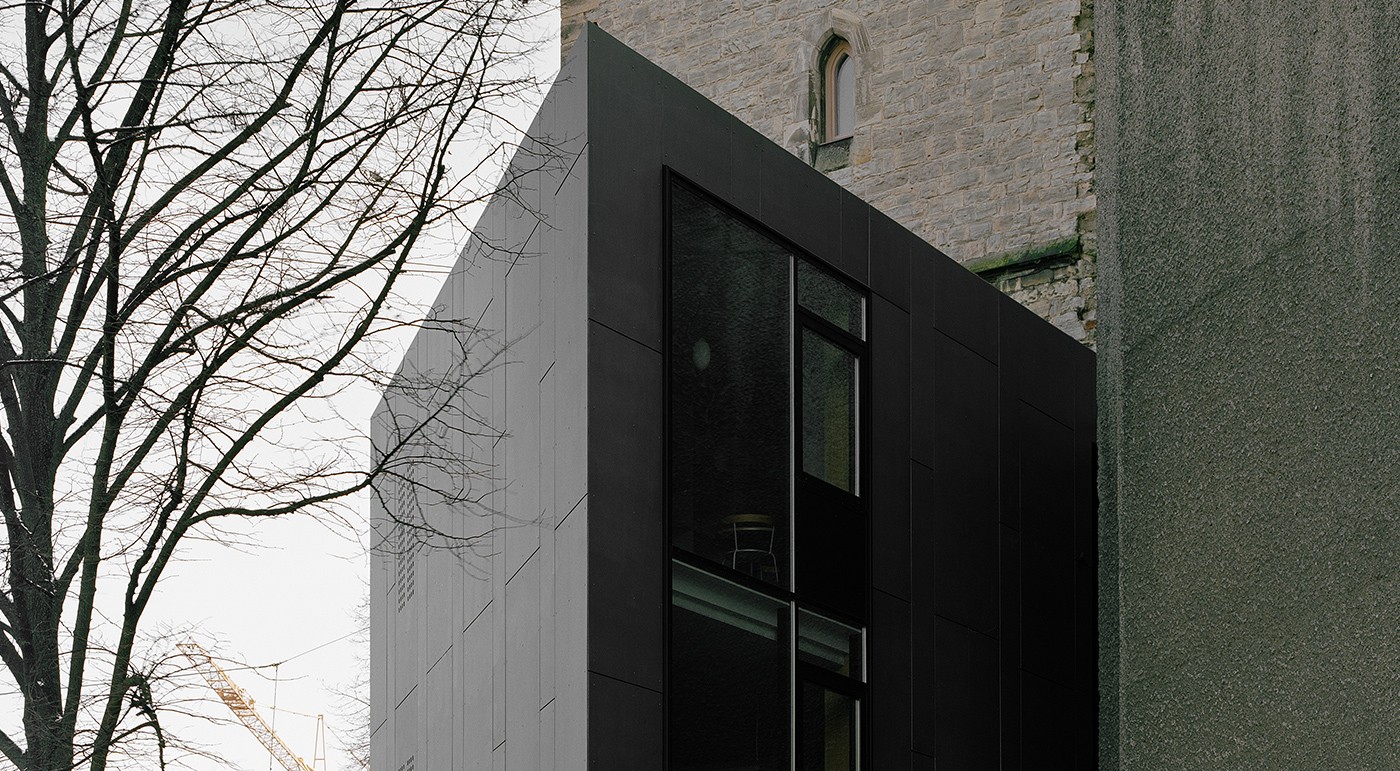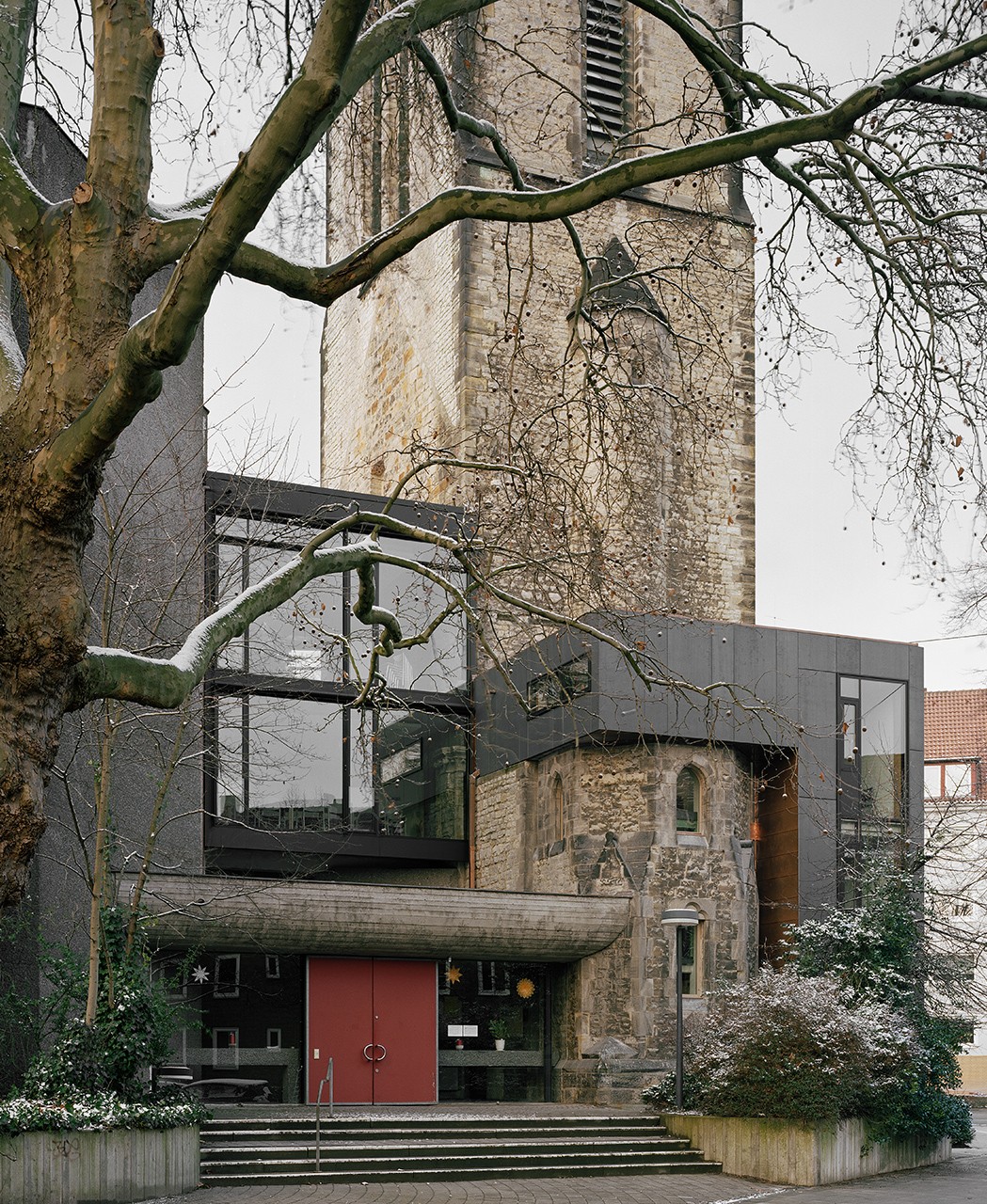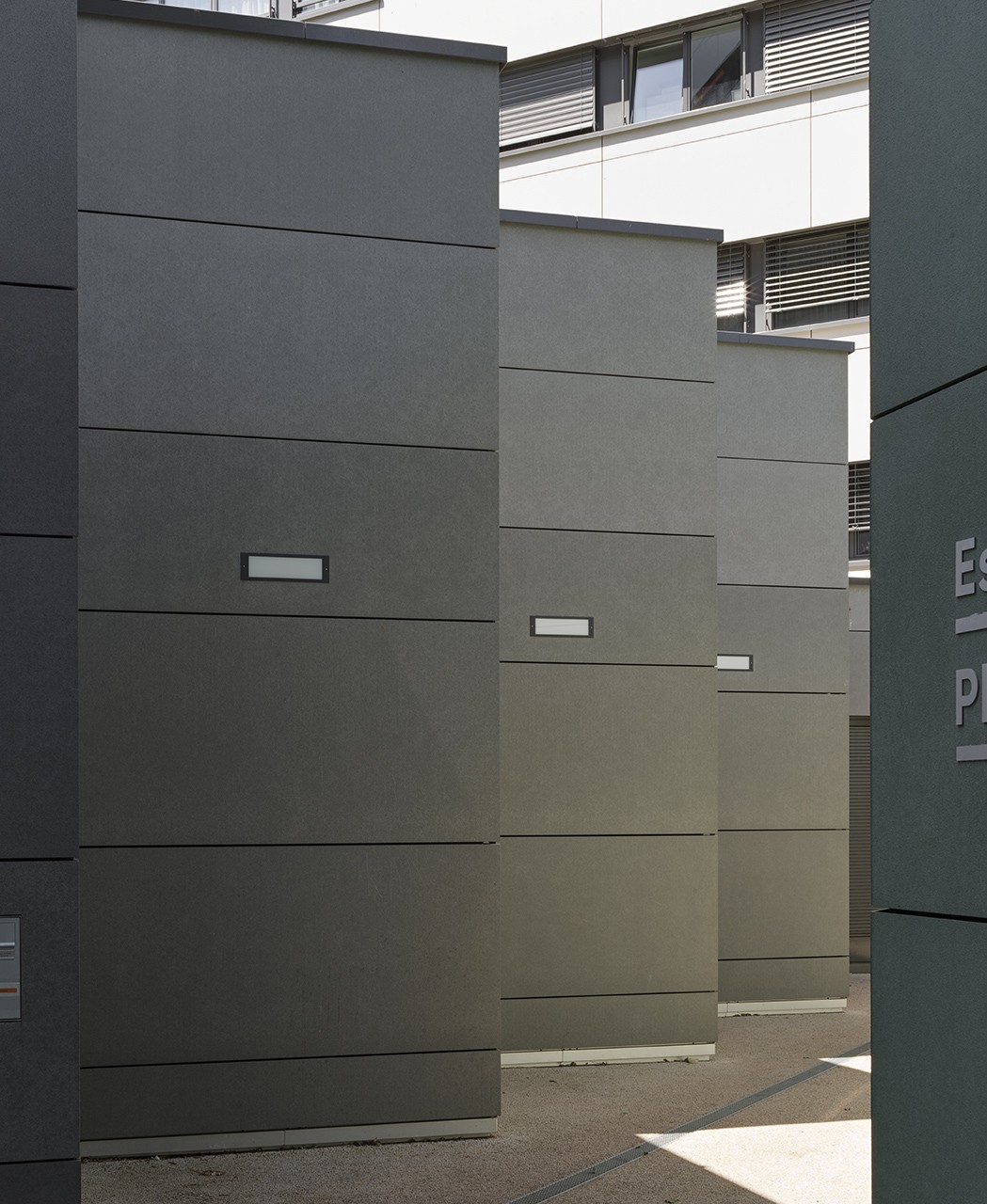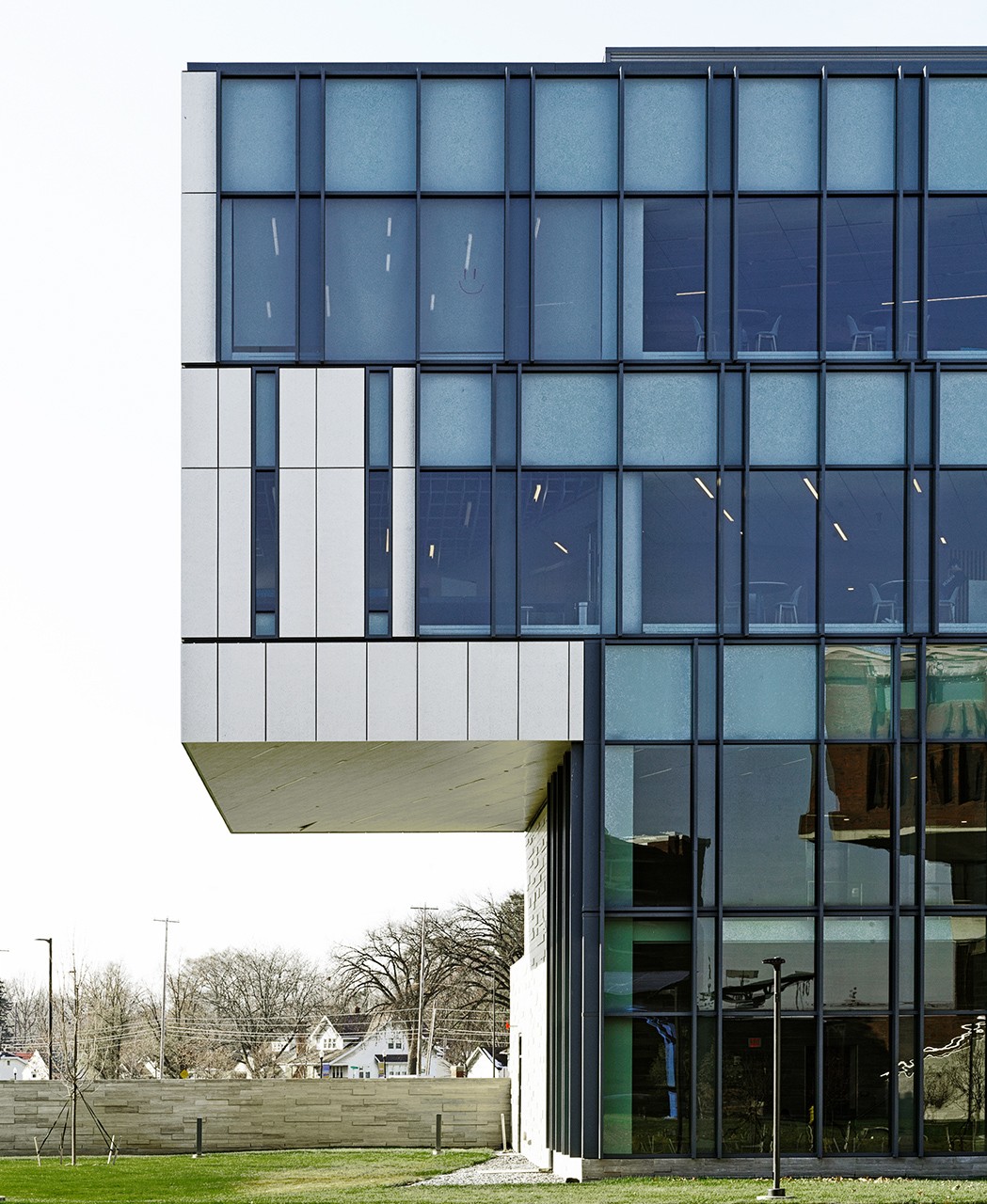Matthäus church

- Product
- concrete skin
- Area
- 300 m²
- Color
- anthracite
- Texture
- standard
- Surface
- matt
- Architect
- Wölk Wilkens Architects
- Year
- 2007
- Location
- Hanover
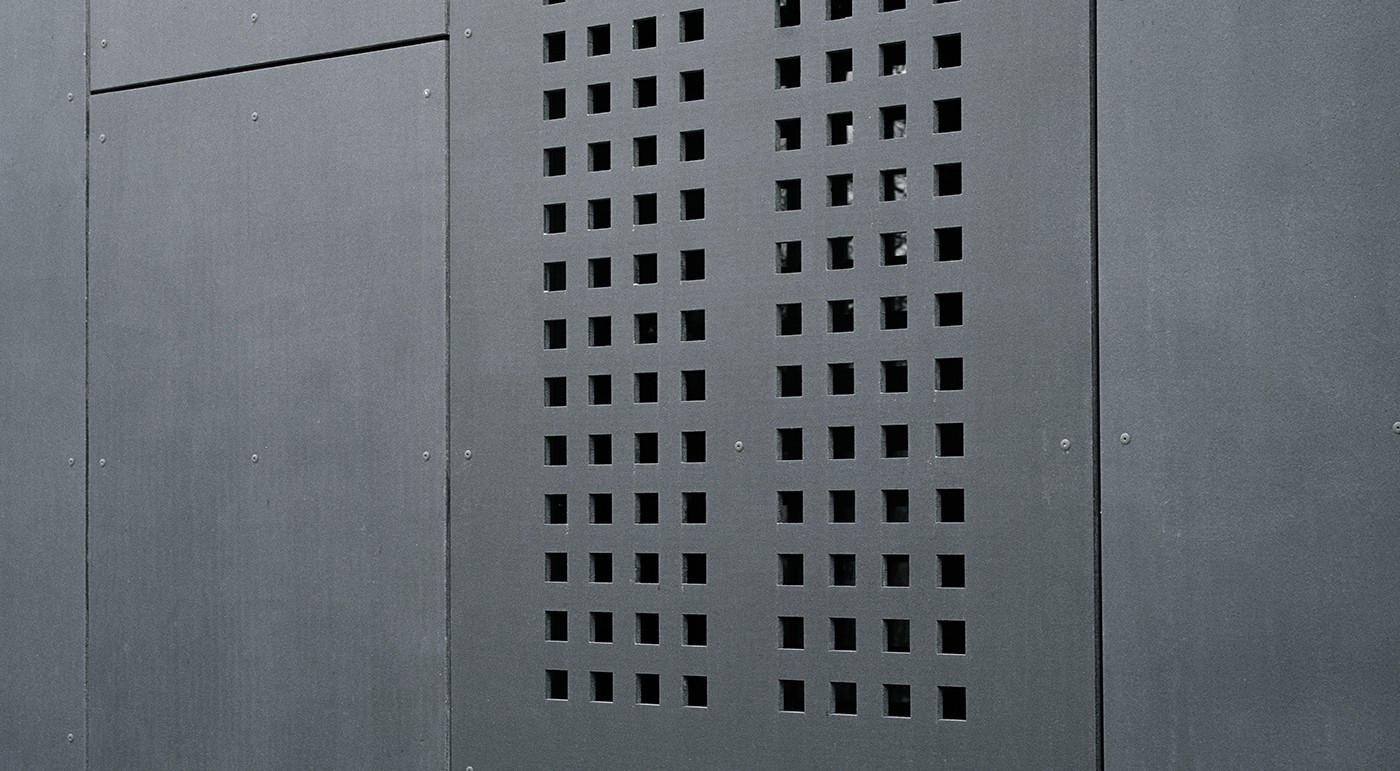
A skin-like concrete shell
Matthäuskirche, a church built in 1906, was partially destroyed during the Second World War. Over time, parts of it were renovated and extensions were added. This enabled the integration of the community center into the church. The new areas were clad with concrete skin panels and blended harmoniously into the existing structure. A glazed opening enables a view into the church. Old and new are combined, creating a connection between the pre- and post-war period and the present. Photos: Rasmus Norlander
